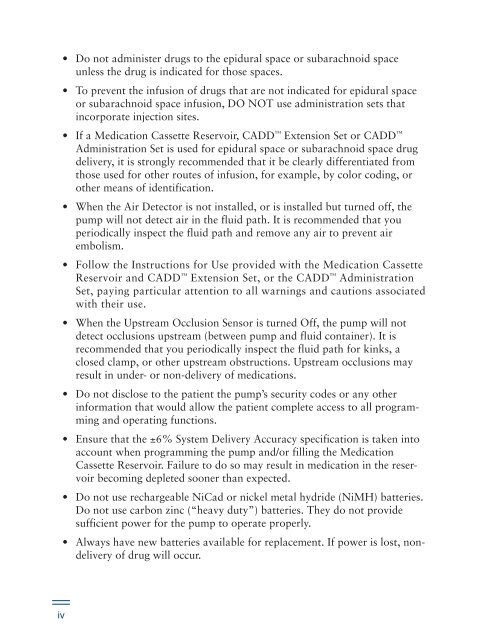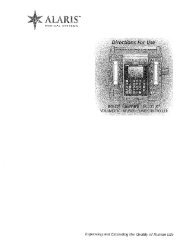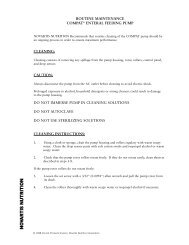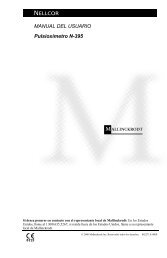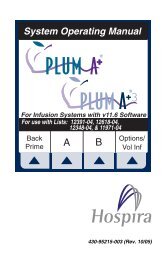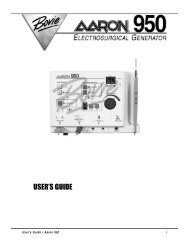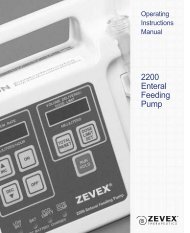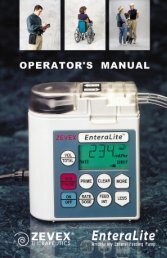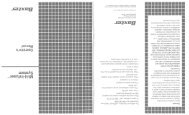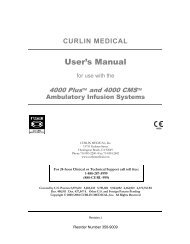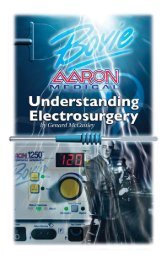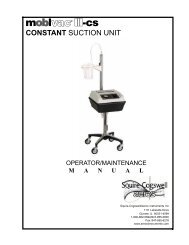Model 6100 and 6101 Ambulatory Infusion Pump
Model 6100 and 6101 Ambulatory Infusion Pump
Model 6100 and 6101 Ambulatory Infusion Pump
Create successful ePaper yourself
Turn your PDF publications into a flip-book with our unique Google optimized e-Paper software.
• Do not administer drugs to the epidural space or subarachnoid space<br />
unless the drug is indicated for those spaces.<br />
• To prevent the infusion of drugs that are not indicated for epidural space<br />
or subarachnoid space infusion, DO NOT use administration sets that<br />
incorporate injection sites.<br />
• If a Medication Cassette Reservoir, CADD Extension Set or CADD <br />
Administration Set is used for epidural space or subarachnoid space drug<br />
delivery, it is strongly recommended that it be clearly differentiated from<br />
those used for other routes of infusion, for example, by color coding, or<br />
other means of identification.<br />
• When the Air Detector is not installed, or is installed but turned off, the<br />
pump will not detect air in the fluid path. It is recommended that you<br />
periodically inspect the fluid path <strong>and</strong> remove any air to prevent air<br />
embolism.<br />
• Follow the Instructions for Use provided with the Medication Cassette<br />
Reservoir <strong>and</strong> CADD Extension Set, or the CADD Administration<br />
Set, paying particular attention to all warnings <strong>and</strong> cautions associated<br />
with their use.<br />
• When the Upstream Occlusion Sensor is turned Off, the pump will not<br />
detect occlusions upstream (between pump <strong>and</strong> fluid container). It is<br />
recommended that you periodically inspect the fluid path for kinks, a<br />
closed clamp, or other upstream obstructions. Upstream occlusions may<br />
result in under- or non-delivery of medications.<br />
• Do not disclose to the patient the pump’s security codes or any other<br />
information that would allow the patient complete access to all programming<br />
<strong>and</strong> operating functions.<br />
• Ensure that the ±6% System Delivery Accuracy specification is taken into<br />
account when programming the pump <strong>and</strong>/or filling the Medication<br />
Cassette Reservoir. Failure to do so may result in medication in the reservoir<br />
becoming depleted sooner than expected.<br />
• Do not use rechargeable NiCad or nickel metal hydride (NiMH) batteries.<br />
Do not use carbon zinc (“heavy duty”) batteries. They do not provide<br />
sufficient power for the pump to operate properly.<br />
• Always have new batteries available for replacement. If power is lost, nondelivery<br />
of drug will occur.<br />
iv


